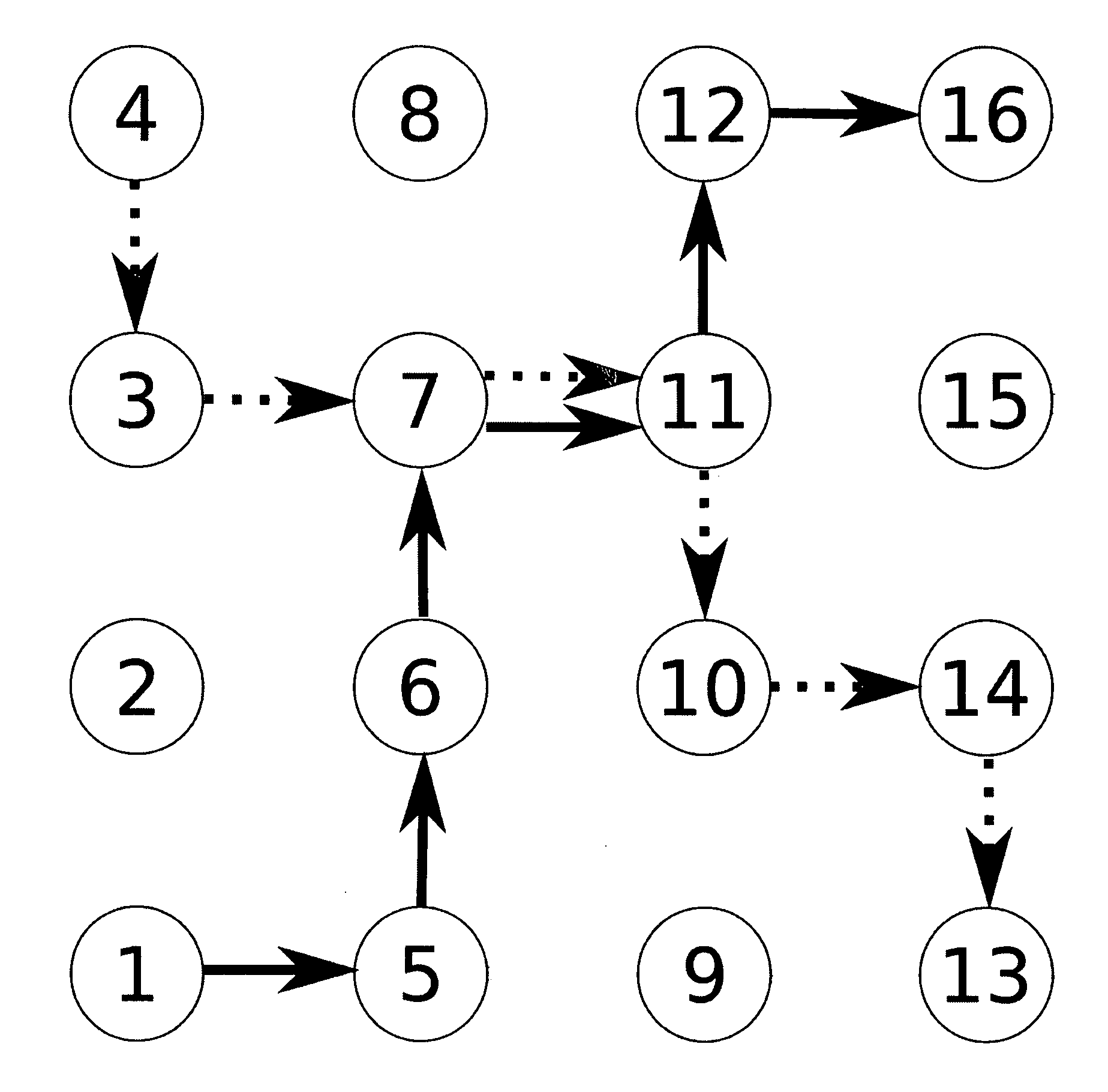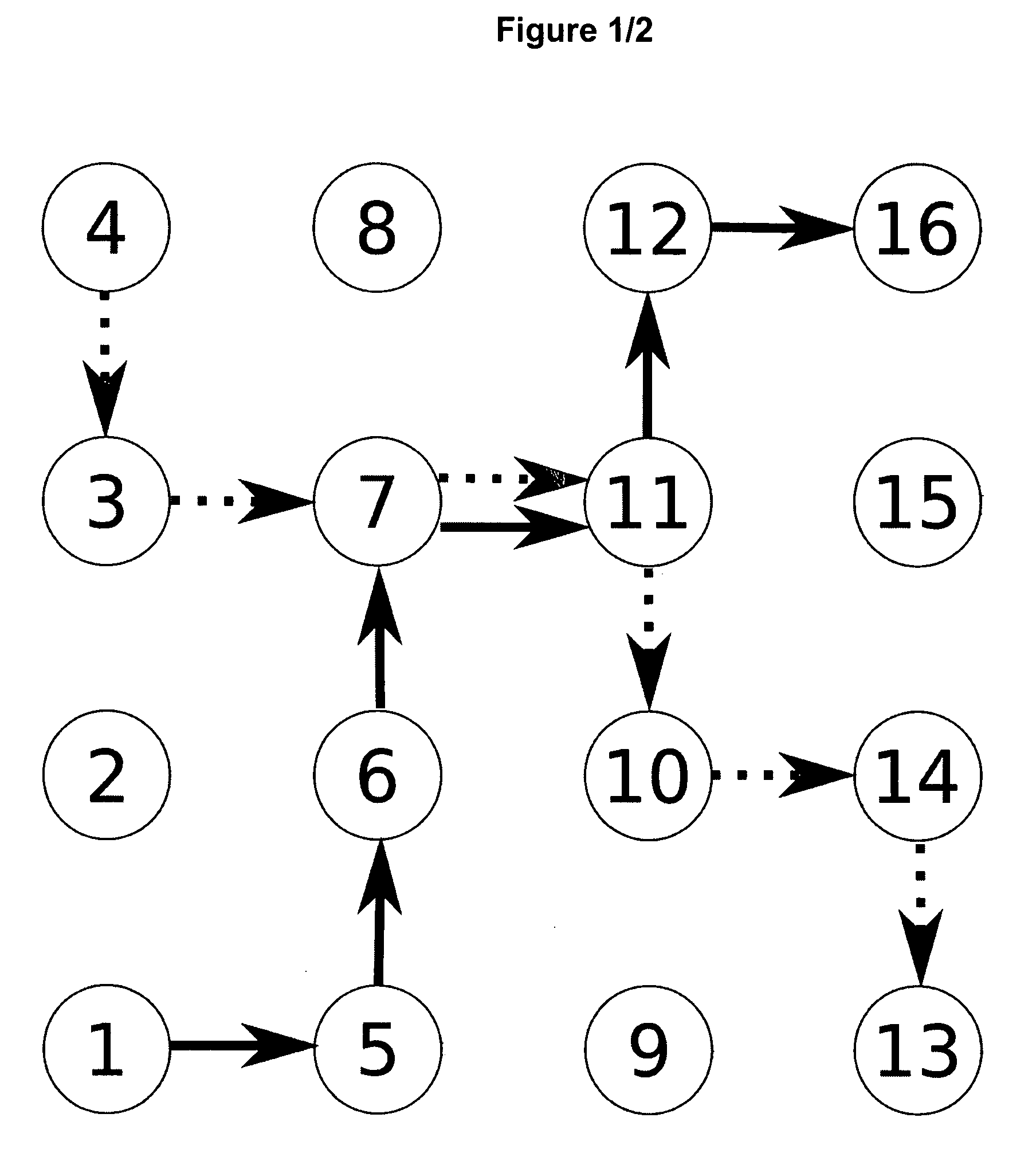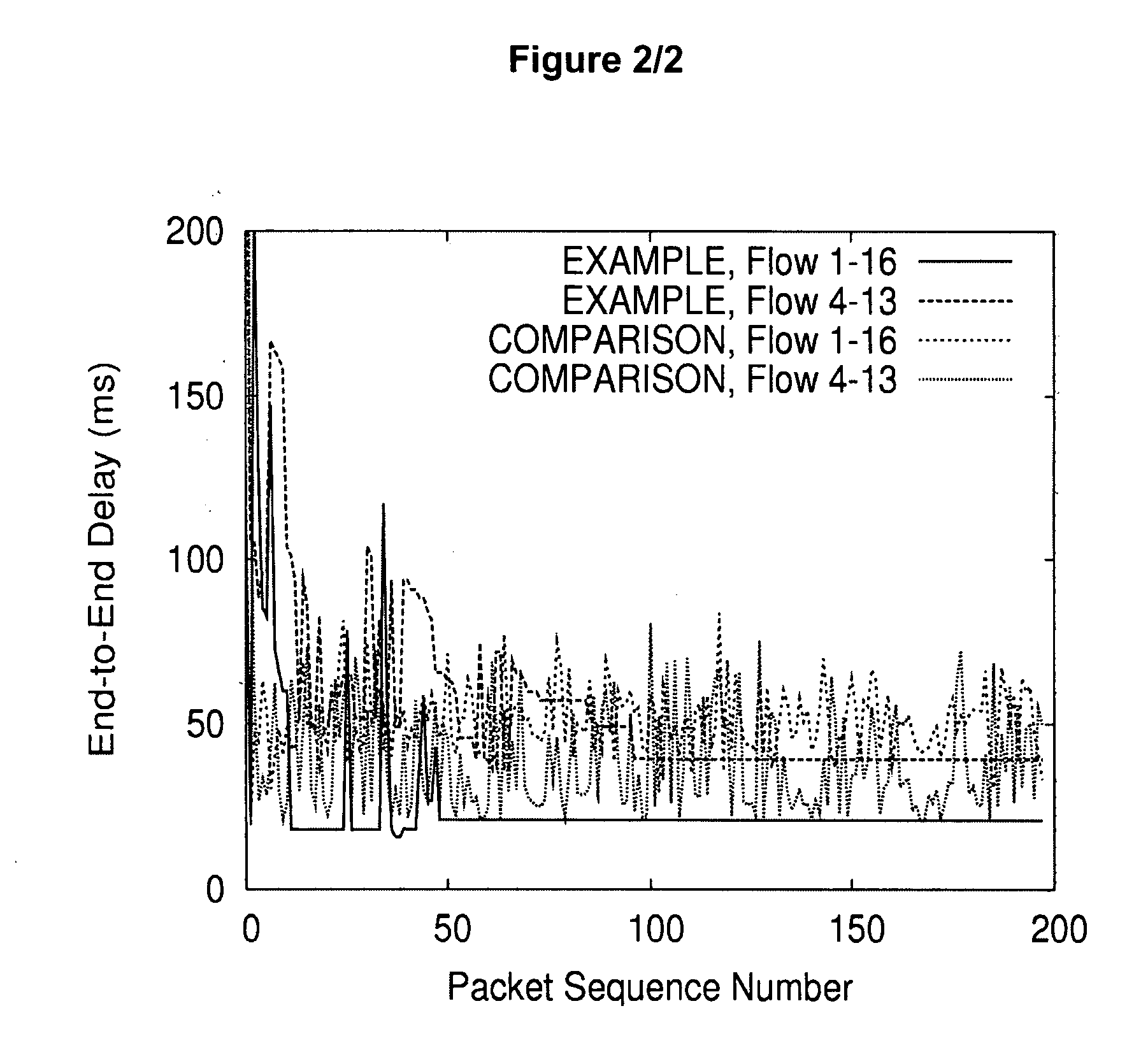Method for scheduling transmissions in an ad hoc network
a transmission and ad hoc technology, applied in the field of ad hoc transmission scheduling, can solve the problems of increasing packet loss, reducing energy efficiency, and high end-to-end delay
- Summary
- Abstract
- Description
- Claims
- Application Information
AI Technical Summary
Benefits of technology
Problems solved by technology
Method used
Image
Examples
Embodiment Construction
[0019]The instant invention provides a method for scheduling all transmissions in an ad hoc network and can be used for wireless, wired, acoustic, or optical networks.
[0020]For convenience, the invention will be described primarily as applied to a wireless mesh network with omnidirectional antennas, two-way communication, and generally stable links carrying streaming data flows which generate packets at regular intervals. The adjustments needed for the invention to function under the additional constraint of high and / or uncertain propagation delays, such as in an acoustic environment, will also be described. As indicated previously, the invention is applicable to a variety of ad hoc networks and to a variety of conditions within those networks.
[0021]As used herein, “source” refers to a node that is the global source of a path or flow of data. “Sender” refers to a node that is the sender of a given medium access control (MAC) layer frame. “Receiver” refers to a node that is the recei...
PUM
 Login to View More
Login to View More Abstract
Description
Claims
Application Information
 Login to View More
Login to View More - R&D
- Intellectual Property
- Life Sciences
- Materials
- Tech Scout
- Unparalleled Data Quality
- Higher Quality Content
- 60% Fewer Hallucinations
Browse by: Latest US Patents, China's latest patents, Technical Efficacy Thesaurus, Application Domain, Technology Topic, Popular Technical Reports.
© 2025 PatSnap. All rights reserved.Legal|Privacy policy|Modern Slavery Act Transparency Statement|Sitemap|About US| Contact US: help@patsnap.com



